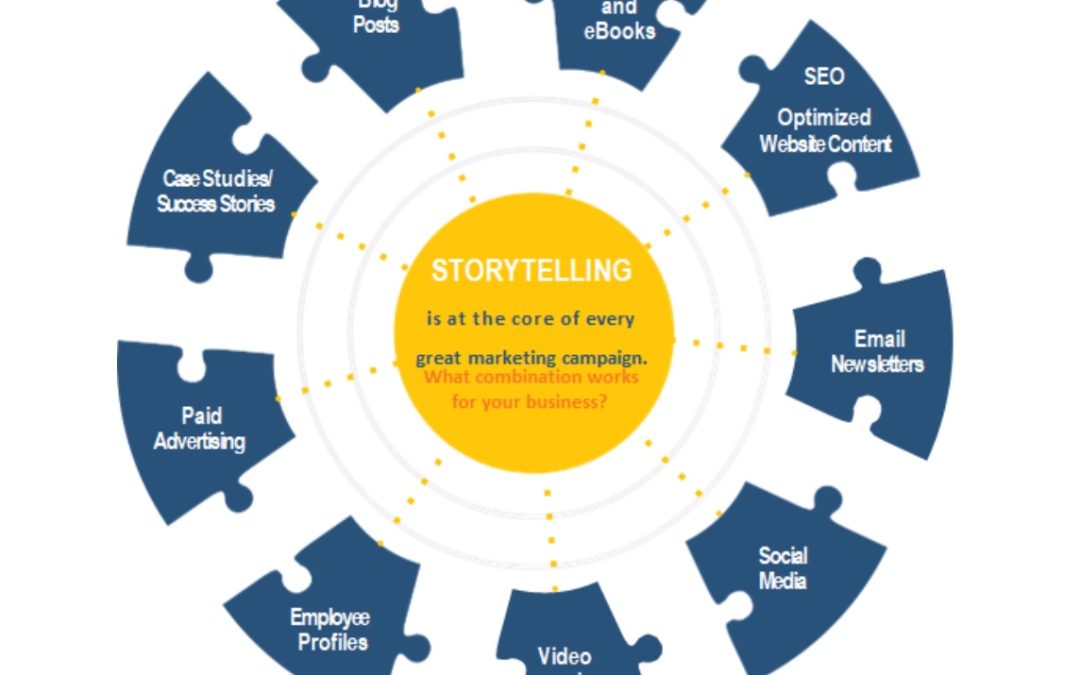The rate of change in the marketing industry has only accelerated in the social media age. It can feel exhausting to keep up with the latest trends, best practices, and strategies filled with jargon. Omnichannel marketing is one of those practices that’s been gaining more attention, especially with its ability to create customer-centric messaging.
But what is omnichannel marketing and what does it involve? Omnichannel marketing is a customer-centric strategy that integrates across platforms for a unified experience. By analyzing analytics across touchpoints – print, website, social media, or email – you can better understand their needs and desires to tailor future messaging to them.
This strategy puts how your customer fits into your brand story at the center. Then, it builds content for all your channels around a cohesive message. No matter where customers first find you, they’ll interact with consistent touchpoints and calls to action. You’ll be able to grow your relationship with them, so they know they’re an integral part of your story, and you can do it while being smart with your time and resources.
1) The difference between omnichannel and multichannel marketing
Let’s focus on the “omnichannel” part for a moment. This is different than “multichannel,” even though they are heading in the same direction. Both involve posting content related to your brand in more than one place, such as your own website or print media, paid advertisements, third-party marketplaces, and social media services. The difference comes from how the content is structured across those channels.
Instead of thinking of your content plan for Facebook, your blog, your paid media, and whatever else you’re juggling, an omnichannel approach considers all the customer touchpoints. Multichannel marketing creates specialized content for each channel, while an omnichannel approach forms the content around a core brand story.
An omnichannel approach views all your various channels as a collective, where your brand’s voice, story, and call to action are cohesive. The format of that content is customized for each channel but your content is connected by a thematic thread.
Among the advantages of omnichannel marketing is how it leverages analytics from every platform. This strategy collects and integrates customer data from multiple sources allowing you to customize messaging, personalize their experience, and update offers based on behaviors across platforms.
2) A cohesive theme is critical to building a customer relationship
Have you ever had a flakey friend? Someone who made plans with you, but then canceled if they got invited to do something they thought was better?
Ouch.
You might try to keep that friendship for a bit, but ultimately, you end up drifting apart.
It’s much the same as the relationship between you and your customers.
Let’s say they discover you through a post on your social media. They like what they see. Maybe they follow you. You’re vibing.
Now, they go to your website. They want to hang out and get to know you better. But if what is on your website doesn’t feel like what you had on social media … Ghosted.
An omnichannel strategy ensures a consistent message and tone across your channels. By integrating analytics from your various platforms, you can deepen those relationships. For example, if someone engages with a post on social media, you can serve them similar content on your website if they visit. If they interact with products on your website, but don’t complete an order, you can follow up with them through an email message. Data from one platform can help influence other channels.
No matter what platform customers first discover you on, an omnichannel approach puts their pain points and your solutions at the core of the storytelling.
3) An omnichannel strategy can be more efficient and cost-effective
If you’ve done your homework already, you know your audience, their pain points and the channels best to reach them.
Now you need to share how you can help them solve their problems.
Presenting a unified message and story across all channels is not only effective, it’s also cost-efficient. You save time and money by carefully planning and creating content designed for multiple media platforms. Understanding analytics from all those platforms can assist in making data-driven decisions with the resources you have to allocate.
You may want video and photography for social and then photography and text for your website. A short interview with a member of your company’s leadership or an industry expert can create a variety of content with a cohesive message – provided that you set up the right professionals to capture it. That interview can be recorded for video content segmented into reels, with stills to act as headshots. A transcription of the interview can be edited and expanded by a skilled writer into blog content or posts for text-heavy social channels. That in turn can be used for email newsletters or included in print publications.
With just a single interview, some thoughtful planning, and post-production editing, you can create a library of content that feels cohesive. It is all built on the same foundation, allowing you to build impact each time your message is delivered.
An omnichannel approach is a marketing mindset that considers the best way to share a consistent brand story wherever that message is discovered. It is critical for launching and maintaining an authentic relationship with your customers.
To learn more about terms marketers should know, check out our FREE DOWNLOAD [pdf] of common industry acronyms.

